There’s something primal, almost magical, about cooking with fire.
The crackle of wood, the flicker of flames, the smoky perfume rising into the air…it’s a sensory experience that speaks to something deep within us. Long before microwaves and air fryers took over our kitchens, fire was the original flavor maker, the heart of every feast.
Across the world, cultures have turned the simple act of cooking over flames into full-blown traditions. These are rituals that aren’t just about food, but about connection, ceremony, and celebration.
Some fire traditions are all about patience and slow roasting; others bring the drama with sudden bursts of flame that light up a table. But whether it’s a whole pig buried underground or cheese set gloriously ablaze in front of a cheering crowd, fire brings a little bit of wonder to every bite.
1. Argentinian Asado (Barbecue)
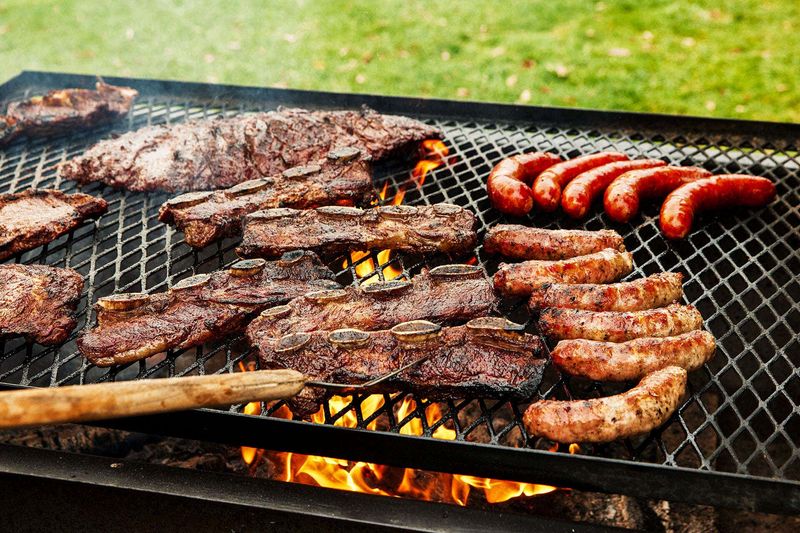
Argentinian asado is more than just grilling — it’s a national ritual. Large cuts of meat are slow-cooked over an open wood fire or charcoal embers.
The fire’s smoky flavor is essential to the taste, and the communal nature of tending the flames and sharing the food is as important as the meal itself. Asado is often enjoyed on weekends, a time for families and friends to gather.
The ritual involves more than just the cooking; it’s about storytelling, laughter, and connection. Each bite carries the essence of Argentine culture, where tradition and camaraderie are dished out in equal measure.
Did you know? The secret to a perfect asado lies in the patience and care with which the fire is maintained, ensuring a slow and even cook.
2. Japanese Yakitori
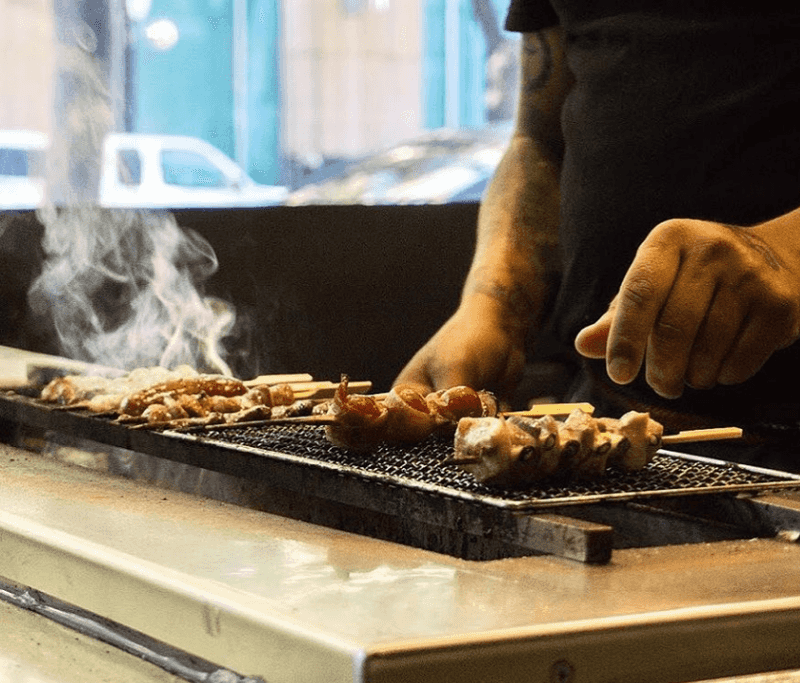
In Japan, yakitori transforms simple chicken skewers into a culinary delight. Skewered pieces are grilled over binchōtan, a special charcoal.
This charcoal burns hotter and cleaner than regular coals, imparting an irresistible smoky flavor that elevates each bite. The grilling process becomes a performance, with chefs expertly turning skewers and brushing them with tare sauce.
Yakitori is often enjoyed in izakayas, casual bars where patrons gather after work. The lively atmosphere, filled with laughter and the aroma of grilling meat, makes for an unforgettable experience.
Binchōtan charcoal is prized not just for its intense heat, but also for its ability to purify air and water. A yakitori night is as much about the social experience as the food itself.
3. Hawaiian Kalua Pig

At a Hawaiian luau, the kalua pig steals the show. Traditionally cooked in an imu, this underground oven utilizes heated stones.
The pig, wrapped in banana leaves, roasts slowly, absorbing the smoky essence of the earth and fire. This time-honored method results in tender meat that practically melts in your mouth.
Kalua pig is more than a meal; it’s a symbol of Hawaiian hospitality and celebration. The process of uncovering the pig is a communal event, with anticipation building as the aromatic steam rises.
Fun fact: The word ‘kalua’ means “to cook in an underground oven,” a method reflective of the Hawaiian harmony with nature. The luau experience is a feast for the senses, where tradition and taste unite.
4. Greek Saganaki (Flaming Cheese)
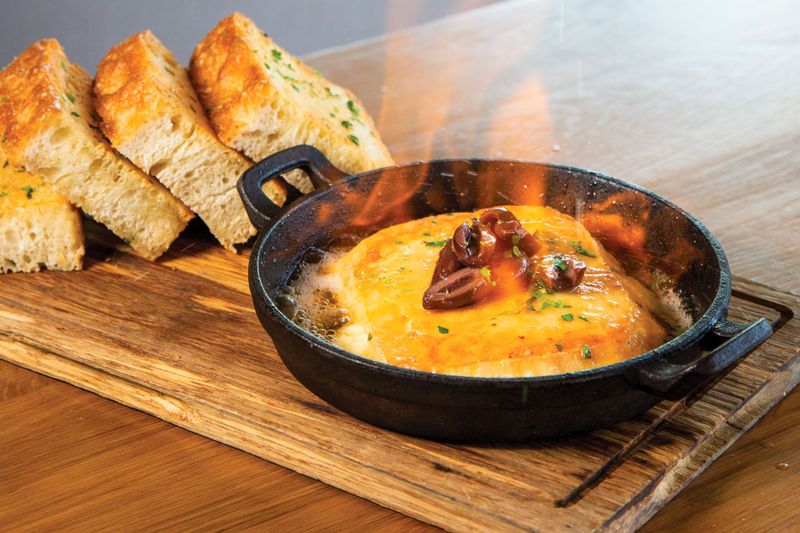
Saganaki is a Greek delight that involves more than just taste; it’s a feast for the eyes. Cheese such as kasseri is pan-fried then flambéed.
Brandy or ouzo is poured over the cheese, and the flame ignites with a dramatic “Opa!” shouted by the server. The result? A gooey, golden crust that harmonizes with the tangy interior.
This dish is often shared among friends, making it a lively part of any Greek meal. The spectacle of the flames draws everyone in, creating a shared excitement that’s both appetizing and entertaining.
5. Indian Tandoori Cooking
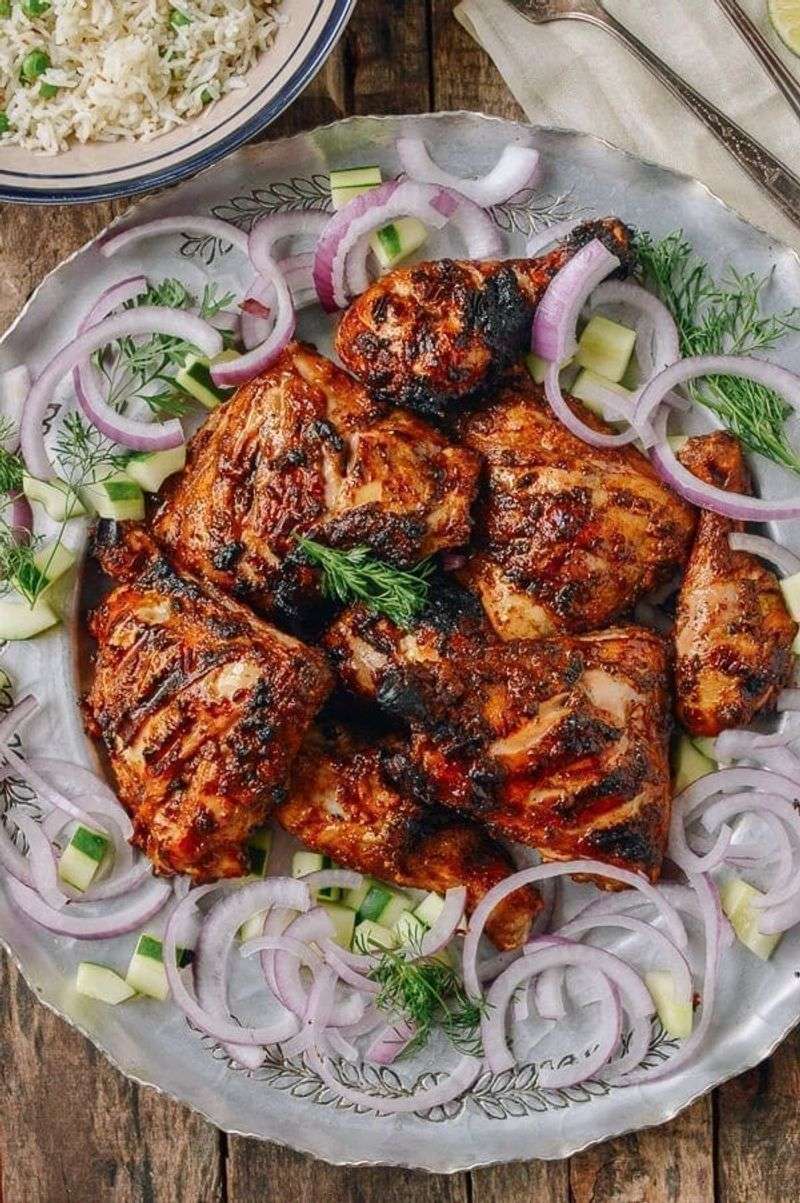
Tandoori cooking is synonymous with vibrant flavors and fiery heat. In India, the tandoor oven, heated by charcoal fire, is a culinary cornerstone.
Meats like chicken tikka and bread such as naan are cooked in its intense heat. The clay oven imparts a unique charred taste, crisping the exterior while sealing in moisture.
This method brings out spices’ aromatic richness like no other. Tandoori dishes are a staple at Indian gatherings, celebrated for their spicy, smoky profile.
The tandoor dates back to ancient civilizations and continues to be revered for its ability to create perfectly cooked, flavorful dishes. Each meal cooked in a tandoor is a journey through India’s rich culinary history.
6. Spanish Paella Over Open Fire
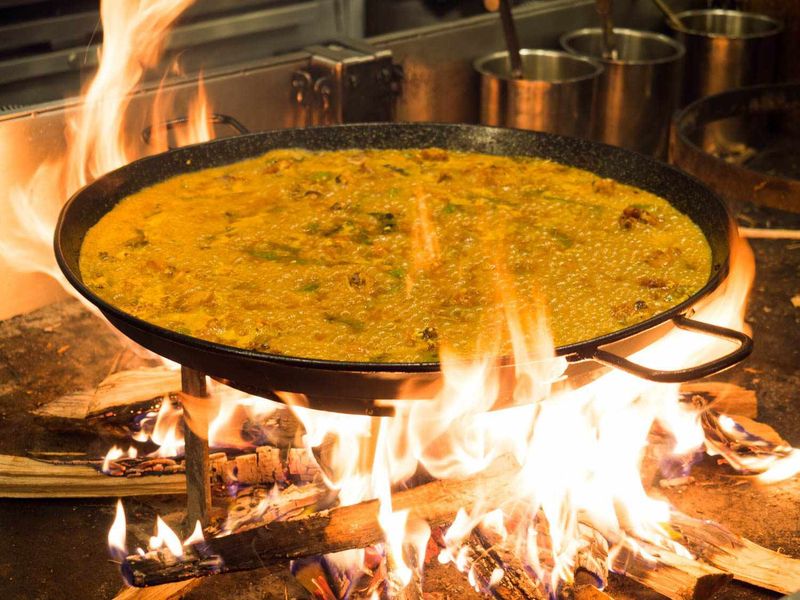
In Spain, paella is more than a dish; it’s a communal experience. Traditionally cooked over an open wood fire, this method infuses the paella with a smoky aroma.
The key is managing the fire to achieve socarrat, the prized crispy rice bottom. Paella combines seafood, meats, and vibrant saffron, creating layers of flavor.
Often prepared outdoors, it’s a social affair, with friends and family gathering to savor every moment. Every bite of paella tells a story of Spanish tradition, where fire plays an integral role in bringing the ingredients to life.
7. Korean Gogigui (Barbecue)
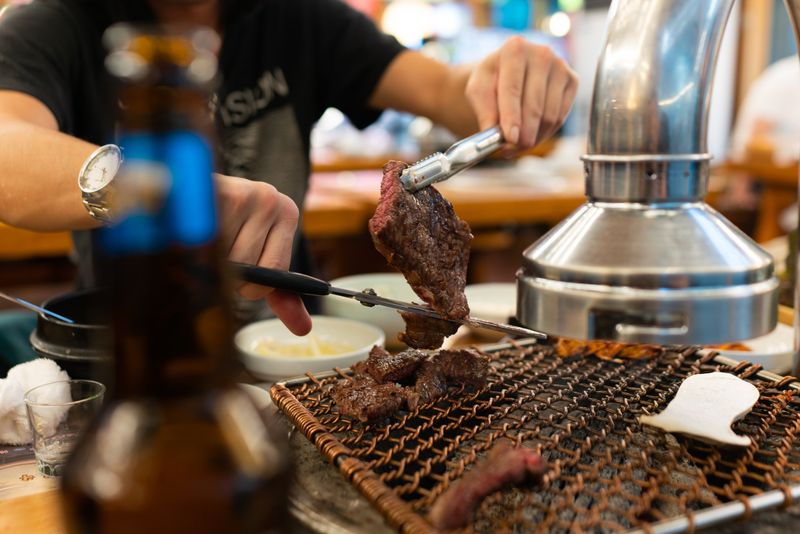
Korean BBQ, or gogigui, is a deliciously interactive dining experience. Diners grill marinated meats directly at their tables.
The built-in charcoal or gas grills cook meats like bulgogi to perfection, making the meal a shared event. Guests become chefs, managing the fire and turning slices for that perfect char.
The atmosphere is filled with laughter, sizzling sounds, and the enticing aroma of grilling meat.
Gogigui translates to “meat roast,” highlighting the emphasis on quality meats and communal enjoyment. It’s more than a meal; it’s an experience that brings people together through food and fun.
8. Ethiopian Coffee Ceremony
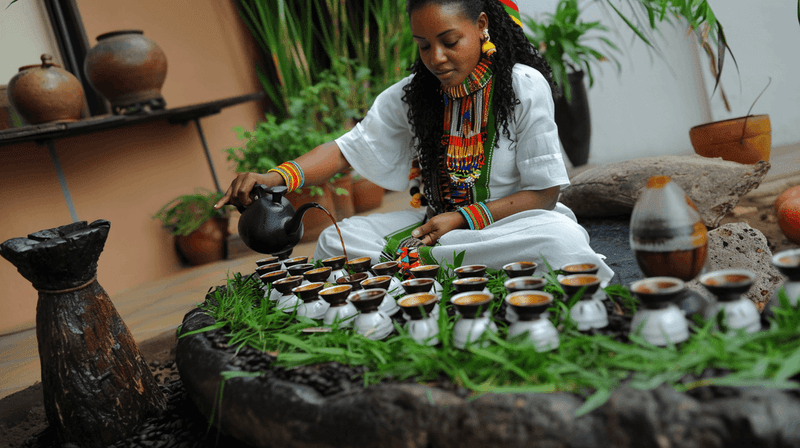
In Ethiopia, coffee is not just a drink; it’s a ceremonial event. The process begins with roasting green coffee beans over an open flame.
As the beans crackle and their rich aroma fills the room, it’s hard not to be drawn into the ritual. The ceremony is a symbol of hospitality and respect, often performed for guests.
The freshly brewed coffee is served in small cups, accompanied by conversation and sometimes popcorn.
Ethiopia is considered the birthplace of coffee, and the ceremony reflects its deep cultural significance. Each sip fosters connection, bringing people together to appreciate the simplicity and depth of this beloved tradition.
9. Italian Porchetta Roasting
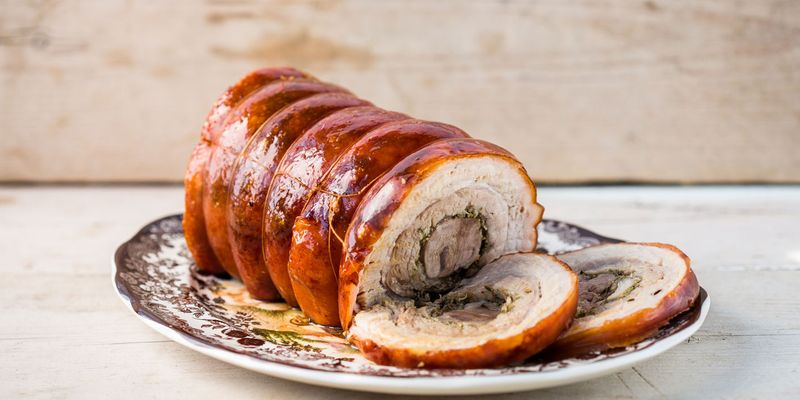
Porchetta is the heart of Italian feasting, a savory pork roast often cooked over a wood fire. This traditional process involves slowly turning the roast on a spit.
The fire’s heat renders the fat, creating a crispy, flavorful skin that encases tender, herb-infused meat. The aroma alone is enough to make your mouth water.
Porchetta’s origins trace back to ancient Rome, where it was a dish fit for emperors. Each roast tells a story of Italian heritage, where fire and flavor come together in a delectable embrace.
10. Chinese Fire Pot (Huǒguō)
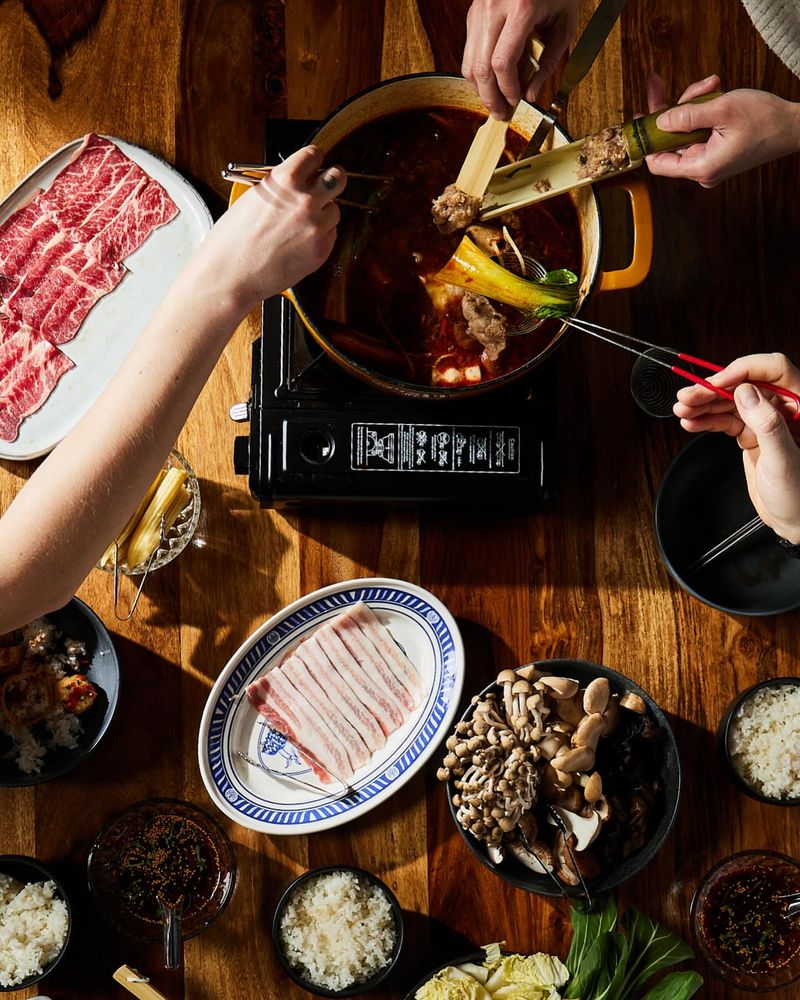
Fire pot, or huǒguō, is a dynamic dining tradition in China. At its center is a simmering pot of broth, kept hot by a central flame.
Diners cook their own ingredients, from meats to vegetables, in the bubbling broth, making each meal customizable and fun. The communal nature of hot pot is its allure, bringing people together around the table.
Hot pot is believed to have originated over 1,000 years ago, evolving into a beloved social dining experience. The process of sharing and cooking together enhances the meal, making each bite a shared delight.
11. Middle Eastern Shawarma
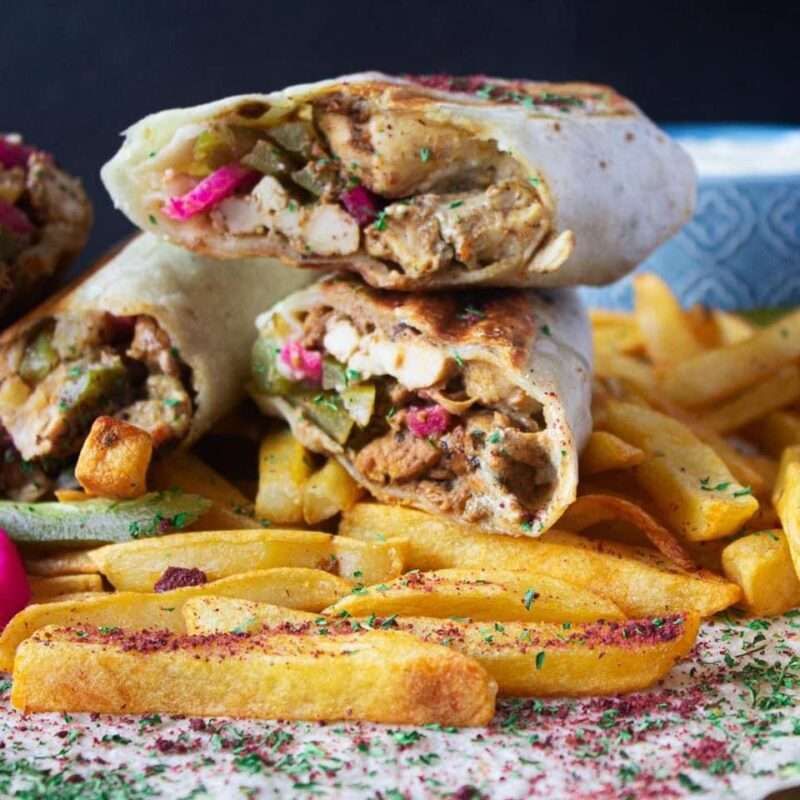
In the Middle East, shawarma is a street food staple, its preparation an art form. Stacks of spiced meat rotate on a vertical spit, slowly roasting.
The fire’s heat crisps the outer layers, which are shaved off for serving, revealing tender, juicy slices underneath. This method creates layers of flavor, with each bite a taste of culinary tradition.
The word ‘shawarma’ comes from the Turkish ‘çevirme,’ meaning ‘turning,’ highlighting the rotating spit technique. It’s a meal that exemplifies the region’s rich flavors and vibrant street food culture.
12. Nordic Bonfire Bread (Pinnebrød)

In Scandinavia, pinnebrød is a beloved campfire treat. Simple dough is wrapped around sticks and roasted over open flames.
The bread puffs up and turns golden, with a slightly crispy crust and soft interior. This outdoor activity is popular during midsummer celebrations, where families gather to enjoy the warmth of the fire.
Pinnebrød means “stick bread,” a fitting name for this hands-on delight. It’s a tradition that connects people with nature and each other, one delicious bite at a time.
Leave a comment